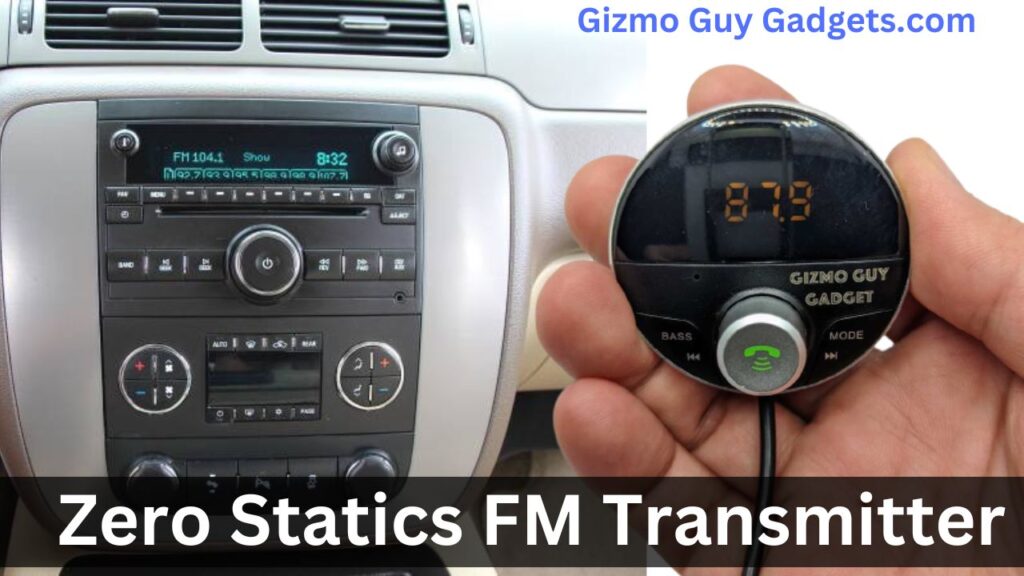
FM transmitters are popular devices used to wirelessly transmit audio from various sources, such as smartphones or MP3 players, to car stereos or portable radios. They provide a convenient way to enjoy your favorite music or podcasts while on the go. However, one common issue that can impact the listening experience is static. Static noise can disrupt the audio quality, leading to a less enjoyable experience. In this article, we will explore effective strategies to minimize static and ensure a crisp and clear sound while using your FM transmitter.
Understanding FM Transmitter Static
Static in FM transmitters can occur due to various factors. Understanding the causes and effects of static is essential in finding solutions to mitigate it. Static can be caused by interference from other electronic devices, obstacles obstructing the transmission, poor-quality cables, or insufficient grounding. When static is present, the audio quality suffers, leading to distortions and an unpleasant listening experience.
Tips for Reducing Static
- Choosing the right FM frequency: Selecting an unused or less crowded frequency can help reduce interference and static. Experiment with different frequencies to find the one that provides the clearest signal.
- Ensuring a clear line of sight: Position the FM transmitter and the receiving device in a way that minimizes obstructions. This allows the signal to travel more freely, reducing the chances of static.
- Using high-quality cables and connectors: Invest in cables and connectors that are designed for audio transmission. Poor-quality cables can introduce noise and static, so opt for shielded cables to minimize interference.
- Minimizing interference from nearby devices: Keep your FM transmitter away from other electronic devices that may cause interference. These devices can include power adapters, USB chargers, or even wireless routers. Distance and separation are key to reducing interference.
- Properly grounding the FM transmitter: Ensuring a proper ground connection for your FM transmitter can significantly reduce static. Consult the manufacturer’s instructions or a professional if you are unsure about the grounding requirements.
Adjusting the FM Transmitter Settings
- Fine-tuning the frequency: Use the tuning controls on your FM transmitter to fine-tune the frequency for optimal performance. Small adjustments can make a noticeable difference in reducing static.
- Adjusting audio levels: Properly adjusting the audio levels can help in minimizing static. Avoid overdriving the audio input, as this can introduce distortion and static. Use the audio level controls on your FM transmitter or the audio source to achieve a
- pleasing balance between volume and clarity.
- Using built-in features for static reduction: Some FM transmitters come with built-in features to reduce static. Explore the user manual or settings menu to identify if your transmitter has features such as noise reduction or signal enhancement. Utilizing these features can help improve the audio quality and minimize static.
- Optimizing the Audio Source
- Using a high-quality audio source: The quality of the audio source you connect to your FM transmitter can impact the overall sound quality. Whenever possible, use high-quality audio files or streaming services that offer better compression and sound reproduction.
- Ensuring proper audio levels and formatting: Pay attention to the audio levels and formatting of your source material. Adjust the volume levels to prevent distortion or clipping, which can introduce static. Additionally, ensure that the audio is in a compatible format for optimal transmission.
- Addressing audio processing issues: If you notice persistent static or audio quality issues, consider examining the audio processing settings of your source device. Disable any audio enhancements or equalizer settings that might be affecting the sound quality. Sometimes, turning off unnecessary audio processing can significantly reduce static.
- Maintaining the FM Transmitter
- Regularly checking for updates: Manufacturers often release firmware updates for their FM transmitters to improve performance and address any known issues. Check the manufacturer’s website periodically to see if any updates are available for your specific model. Updating the firmware can enhance the transmitter’s functionality and potentially reduce static.
- Cleaning and maintaining the device: Keep your FM transmitter clean and free from dust or debris. Use a soft cloth to wipe the surface regularly. Pay attention to the connectors and ports, ensuring they are free from any dirt or corrosion. Clean connections can ensure better signal transmission and reduce static.
- Protecting against environmental factors: Extreme temperatures or humidity can affect the performance of your FM transmitter. Avoid exposing the device to direct sunlight or excessively humid environments. Additionally, protect it from moisture or water damage, as these factors can degrade the signal quality and introduce static.
Zero Static Troubleshooting Tips
- Identifying common issues: Familiarize yourself with common troubleshooting scenarios related to FM transmitters and static. These can include issues such as loose connections, improper grounding, or nearby interference sources. Understanding the potential problems can help you pinpoint and resolve the root cause of static.
- Steps to troubleshoot and resolve static problems: If you encounter static while using your FM transmitter, follow these steps:
- Check all connections to ensure they are secure.
- Adjust the FM transmitter’s frequency and audio levels.
- Move the FM transmitter and receiving device to different locations to find the best signal reception.
- Remove or distance any potential interference sources.
- Verify that the audio source is in good condition and properly formatted.
- If necessary, consult the user manual or contact customer support for further troubleshooting guidance.
Conclusion
- Getting zero static with your FM transmitter is essential for an enjoyable audio experience. By understanding the causes of static, implementing effective tips to reduce it, adjusting transmitter settings, optimizing the audio source, maintaining the device, and troubleshooting any issues, you can achieve a clear and static-free sound. Experiment with different strategies and fine-tune your setup to find the best configuration that minimizes static and maximizes audio quality.
